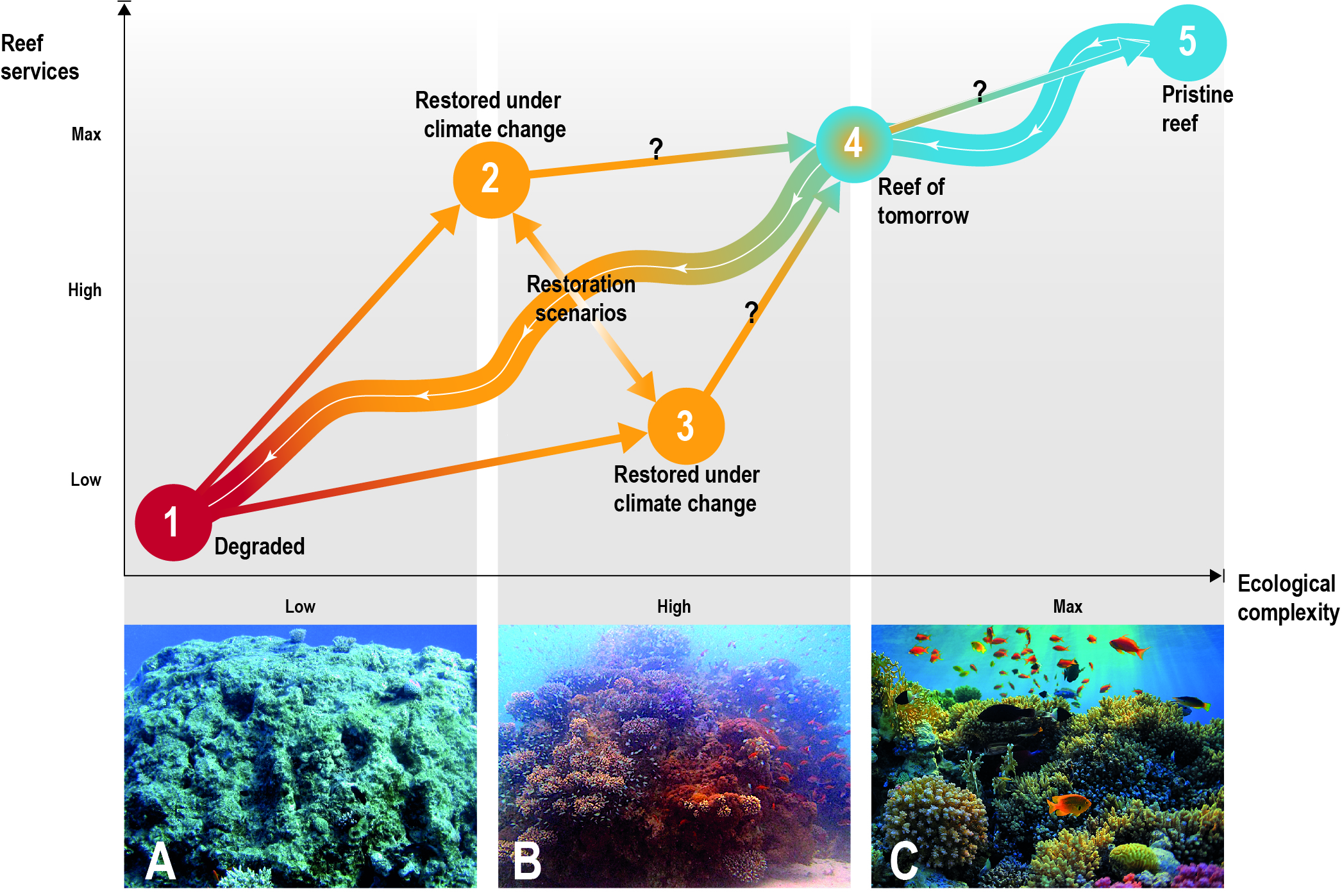
Box 5.5, Figure 1
Box 5.5, Figure 1 | Coral reef restoration as an ocean-based adaptation tool to climate change. The squiggly line represents non-linear ecological statuses along a trajectory and five reef states (circles 1–5; in varying ecological complexity [x-axis] and service levels [y-axis]) including two extreme statuses (a pristine versus a highly degraded state, circles 5 and 1, respectively). Two ‘restored reef-state’ scenarios (circles 2, 3), lead to the state of the restored ‘reef of tomorrow’ (circle 4). The route from the state of the ‘reef of tomorrow’ (circle 4) to a pristine state (circle 5) is doubtful (the question mark) and is still at a theoretical level. The routes from the two ‘restored reef-state’ scenarios to the ‘reef of tomorrow’ are under investigations (the question marks). Based on Rinkevich (2014) (Figure 1). A–C represent different reef statuses. A = a denuded knoll at the Dekel Beach, Eilat, Israel before reef transplantation (November 2005; Photo: Y. Horoszowski-Fridman); B = the same knoll, restored (June 2016; photo by Shai Shafir). More than 300 nursery-grown colonies of 7 coral species were transplanted during three successive transplantations (years 2005, 2007, 2009). In 2016 the knoll was surrounded by reef inhabiting schools of fish. C = a pristine reef, not existing under current and anticipated reef conditions. Restoration scenarios are developed along paths from a degraded reef (low ecological complexity, minimal reef services) toward a healthy ‘reef of tomorrow’, passing through two restored reef states that are impacted by climate change (Shaish et al. 2010a; Schopmeyer et al. 2012; Hernández-Delgado et al. 2014; Rinkevich, 2015a). The employment of ecological engineering approaches may help in moving the ecological states from either restored reef to the ‘reef of tomorrow’ status (medium confidence).